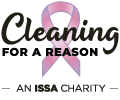Cleaning Products
Technology, environmental, and human health research are constantly evolving. In response, policies must develop to guide behavior in the appropriate way. Use this section to explore various regulatory measures and issues impacting the manufacturing and distribution of cleaning products. Some of the top ones include the Toxic Substances Control Act (TSCA)/Lautenberg Act, Volatile Organic Compound (VOCs), the California Safer Consumer Products Program (SCP), phosphates, antibacterial hand soaps, transportation of hazardous materials, and other policies that are currently affecting products in the cleaning industry.
TSCA/Lautenberg
The 1976 TCSA granted the U.S. Environmental Protection Agency (EPA) authority to regulate the manufacture or sale of chemicals to protect the environment and public health. It was amended by the Frank R. Lautenberg Chemical Safety for the 21st Century Act (LCSA) in 2016, which increased the regulatory role of processors and implemented a more regimented approach to evaluating and regulating existing chemicals.
Ingredient Communications Compliance
There is a growing demand by the public for transparency as it pertains to ingredients in consumer products. Many states have considered laws for some degree of disclosure, and beginning in January 2020, California will require manufacturers of cleaning products to disclose all ingredient information on both the product label and on the company’s website
VOC Regulations
VOCs are regulated by the EPA and by numerous state governments in order to protect public health.
California Safer Consumer Products Program
SCP is a green chemistry initiative which aims to reduce toxic chemicals in consumer products to increase safety and protect public and environmental health.
Phosphates
The phosphorous content of cleaning products is regulated by the EPA and by half of the states in the U.S. in effort to protect human and environmental health.
Antibacterial Hand Soaps
The U.S. Food and Drug Administration (FDA) monitors antibacterial hand soaps to ensure consumer exposure is within safe limits.
Transportation of Hazardous Materials
Many chemical-based cleaning products are considered hazardous materials for purposes of transportation and are therefore subject to safety regulation.





